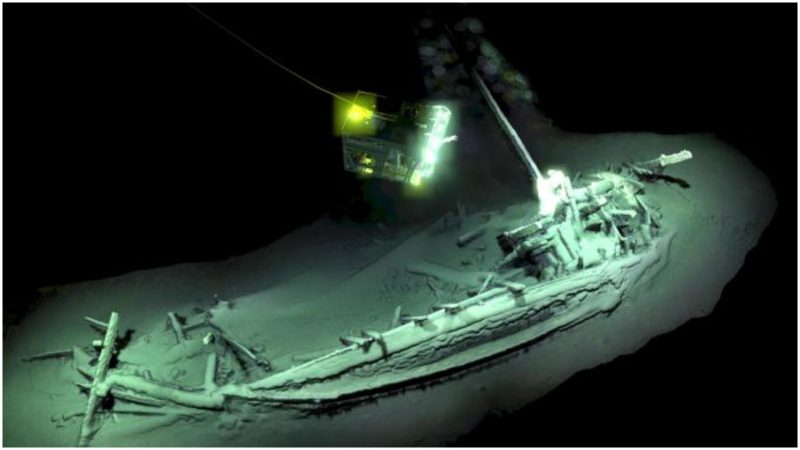Off the coast of Bulgaria, more than a mile beneath the surface of the Black Sea, a team of maritime archaeologists, scientists and surveyors has discovered what could be the world’s oldest intact shipwreck – a 75-foot-long Greek trading vessel carbon-dated to more than 2,400 years ago.
The Black Sea Maritime Archaeology project says it found the wreck in oxygen-free conditions that preserved its components. Its design has previously been seen only on the side of ancient Greek pottery.
The ship was found lying whole with its mast, rudders, and rowing in a “shipwreck graveyard’ that has already revealed over 60 other vessels.
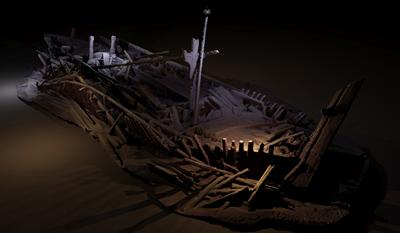
A remote-controlled submarine spotted the ship lying on its side about 50 miles off the coast of Bulgaria. If water is anoxic (oxygen-free), it can preserve organic material for thousands of years.
A small piece of the vessel has been tested and confirmed as originating in 400 BC, which makes it the oldest intact shipwreck known to mankind.
“A ship surviving intact from the classical world, lying in over 2km of water, is something I would never have believed possible,” said Professor Jon Adams, the principal investigator with the Black Sea Maritime Archaeology Project (MAP) told The Guardian. “This will change our understanding of shipbuilding and seafaring in the ancient world.”
The ship has only previously been seen “on the side of ancient Greek pottery such as the ‘Siren Vase’ in the British Museum.”
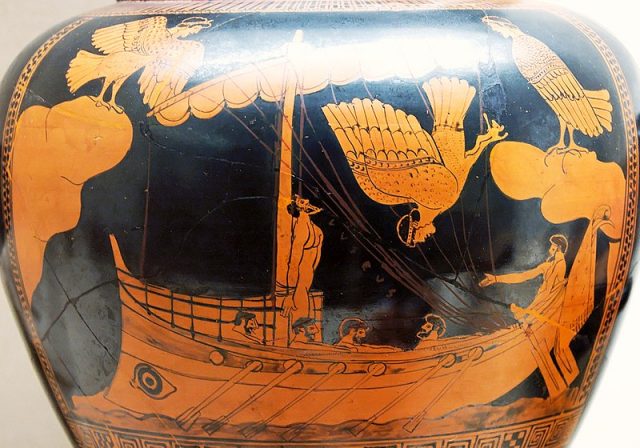
Its similarity to that vase is prompting speculation about Odysseus’s ship, and how close to reality it could have been. The vase’s design shows a ship with a mast identical to the one now found on the seabed.
The Siren Painter, as he is known, has his most famous work exhibited in the British Museum, said the Daily Mirror. His real name is unknown, as are the date of his birth and death.
The vase shows Odysseus tied to the mast of a similar ship as he resisted the Siren’s calls.
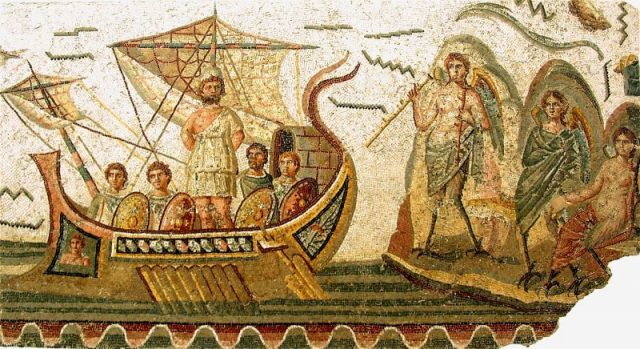
In the Odyssey, Odysseus was returning from the Trojan War. It was written some time in the 8th century BC.
This shipwreck was found during a three-year survey of the area using technology previously available largely to oil companies. It reportedly discovered 60 shipwrecks, including a 17th century Cossack raiding fleet and Roman trading vessels carrying amphorae.
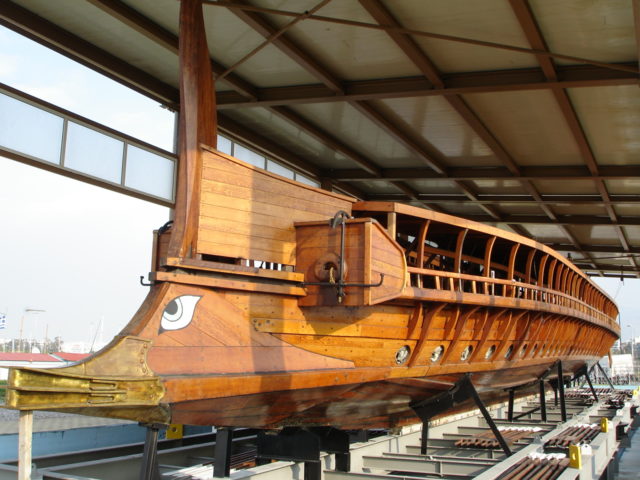
The team reportedly said they intended to leave the vessel where it was found, but added that a small piece had been carbon dated by the University of Southampton and claimed the results “confirmed [it] as the oldest intact shipwreck known to mankind,” reported the Guardian.
The team said the data would be published at the Black Sea MAP conference at the Wellcome Collection in London in late October 2018.
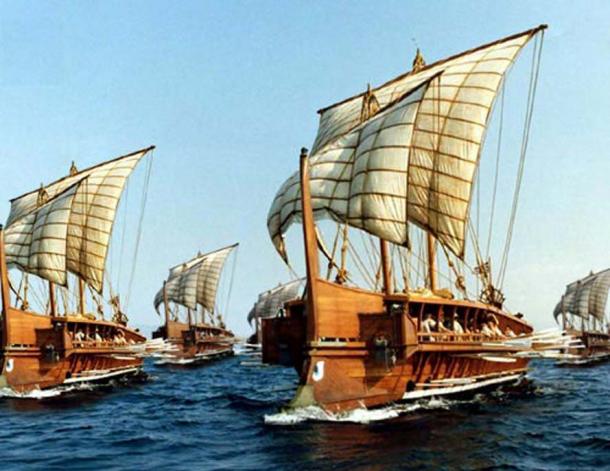
Professor Adams said in an interview that the ship, both sail, and oar-powered, probably sank in a storm, with the crew unable to bail water in time.
The archaeologist believes “it probably held 15 to 25 men at the time whose remains may be hidden in the surrounding sediment or eaten by bacteria.”
He said he plans to leave the ship on the seabed because raising it would be expensive and necessitate taking the pint joints apart.
It was chiefly used for trading but the professor believes it may have been involved in ‘a little bit of raiding’ and probably based at one of the ancient Greek settlements on what is now the Bulgarian coast.
Read another story from us: Lucky Man Accidentally Finds Remnants of a 200-Year-old Shipwreck
Professor Adams said, “Ancient seafarers were not hugging the coast timidly going from port to port but going blue-water sailing.”
Nancy Bilyeau is a novelist and journalist who has worked on the staffs of “Rolling Stone” and “InStyle.” Her new novel, “The Blue,” is set in 18th century Europe. Publishers’ Weekly said, “Intriguing thriller … Historical fans will be well satisfied.” For more information, go to www.nancybilyeau.com.
